
concentration is the main key
to not missing a take. If you take
your eye off the dry fly for just a
second, you may miss a fish.
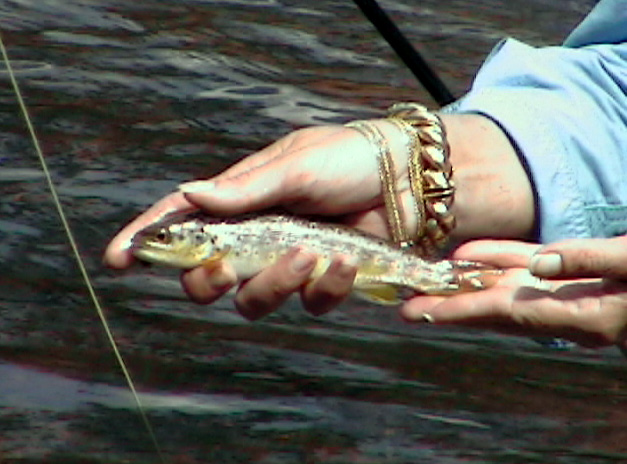
it is for the trout to spot you. Stay
as low as you can to get close to
the fish.
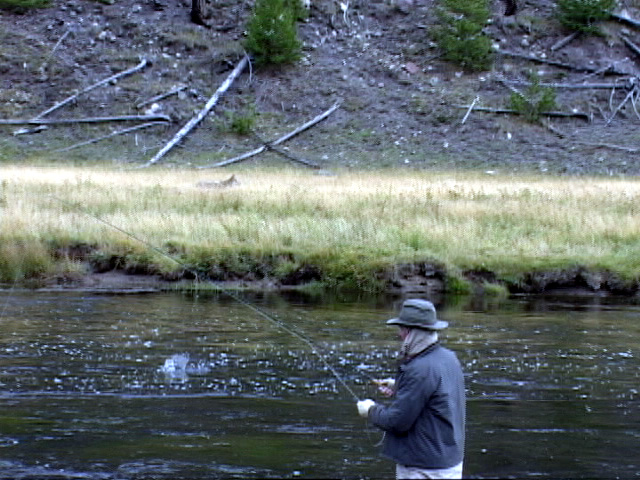
requires a different presentation.
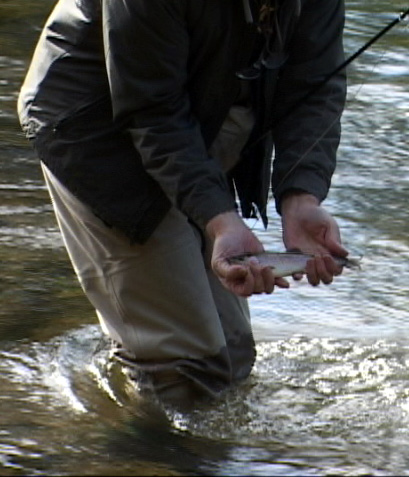
Just like it is anywhere you are fly-fishing, presentation is usually extremely important. Getting a drag free drift is not easy in many situations when you are fishing pocket water. Conflicting currents, or currents that flow in different directions and at different velocities, are commonplace.
There are two basic things you can do to deal with drag. One is to keep your fly line out of the water as much as possible. The more fly line you have in the water, the more drag you will have and the more likely it is that your fly will second thing is to learn to mend your line effectively.
Most of the cast you will need to make will be most effective if you cast in an upstream direction. Sometimes, however, will you need to make a downstream presentation. You should try to avoid making across stream presentations where conflicting currents exist whenever it is possible or unnecessary to do so. Short up and across or better, slightly up and across, short cast are preferred in most situations.
Casting Distance:
As we said in the casting section, long cast are rarely necessary. Most cast should probably be in the range of 15 to 30 feet or less.
Positioning Yourself for the Cast:
First and foremost, position yourself such that it is possible to make some type of cast without hanging grass, a tree limb or bush. Alway check behind you to make sure you can make your back cast. The best thing you can do to avoid drag is to position yourself in the best possible position for the cast. In other words, don’t cast across conflicting currents unless you have to. If you are fishing from the bank, there is not much you can do except move up or down the stream to help improve the situation. If you are wading you can move anywhere in the stream that the depth and obstacles allow you to move in order to get into a better position. You just need to make certain that you do so without spooking the trout.
Casting to Individual Rising Fish:
If you see a trout rising occasionally or steadily, first get into the best possible position to cast to it without spooking it. Your first cast should a few feet above and land between you and the fish, not past the fish. If you cast on top of it or too close to it you may spook it. If you cast beyond the fish you may spook it with you fly line, leader or fly not drifting drag free. Being short is much better. Make each sequential cast slightly farther until your fly is directly upstream of the fish and drifting drag free. If you carefully time the rises of the fish, using a counting method of 1001, 1002, etc., you can tell approximately when the fish will rise. By observing how long it takes you fly to reach the fish and timing you cast, you can get the fly near the fish when it is rising to eat insects. This will increase your odds of getting a take.
Casting to Likely Feeding Lanes:
(Check back-Coming Soon)
Casting to Likely Holding Areas:
(Check back-Coming Soon)
Copyright 2007 James Marsh
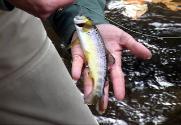
and do not require a lot of effort
to fish. Short upstream cast are
all you need in most situations.
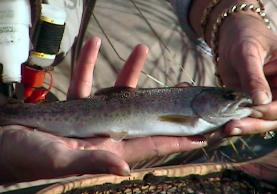
come easy. This rainbow came from the Firehole
River where the trout can see the eyes of your fly.
Make a poor presentation in the Firehole and most
likely you will just be fishing for the fun of casting.
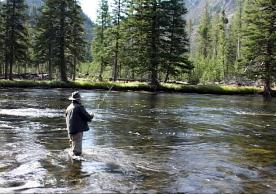
when you are fishing smooth, slick water such as
found in many areas of the Madison River. In this
scene, James is fishing a soft hackle fly.
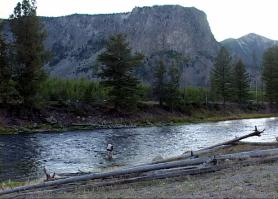
Madison River is a large stream that requires
many different types of presentations depending
on a lot of factors involved.